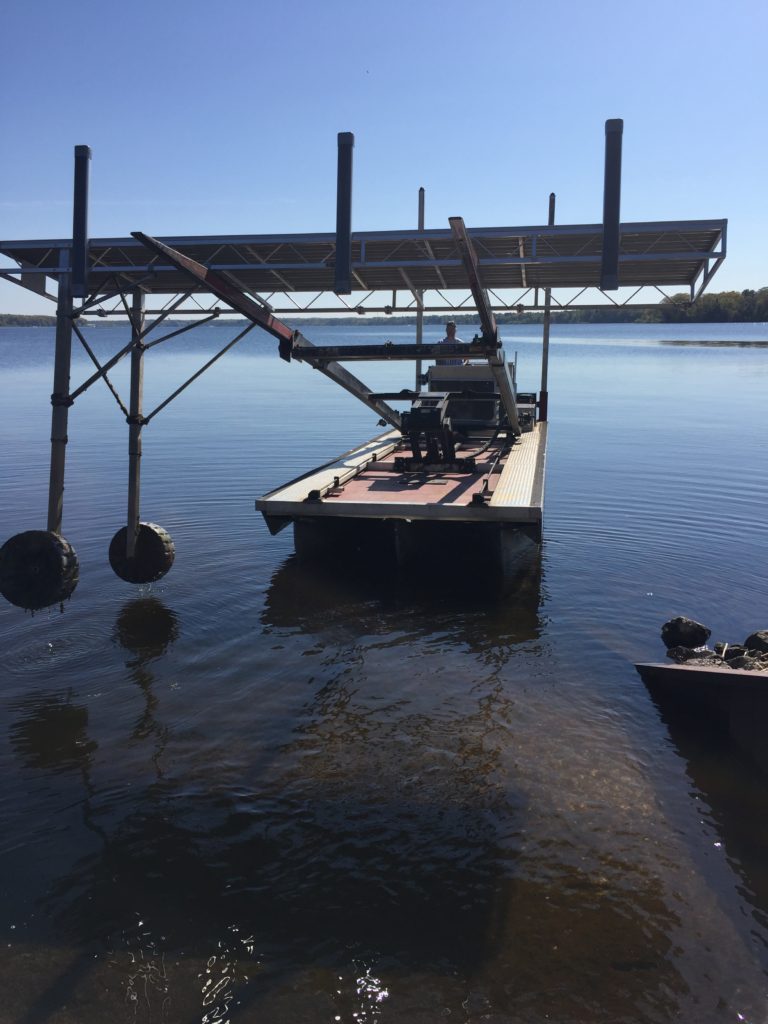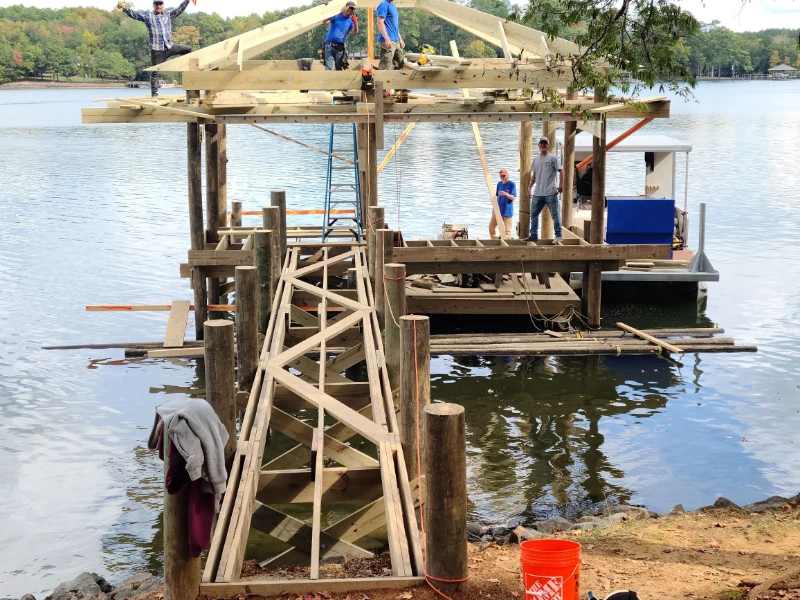Understanding the Costs Involved in Dock Repairs
Understanding the Costs Involved in Dock Repairs
Blog Article
Reliable Dock Repair Work Techniques: Guaranteeing Structural Stability
Guaranteeing the architectural stability of anchors via reliable fixing strategies is vital for the longevity and safety of marine centers. Subsequently, choosing the appropriate fixing products, such as corrosion-resistant alloys and composite products, is essential for toughness.
Assessing Dock Damage
Analyzing dock damage is a critical first action in ensuring the architectural honesty and safety of any type of docking facility. Secret facets to take a look at consist of the dock's foundation, pilings, decking, and equipment (Dock Repairs).
Architectural designers or certified assessors generally perform these evaluations using specialized tools and strategies. For instance, underwater examinations could utilize sonar devices or from another location operated lorries (ROVs) to spot submerged damage. Above water, visual inspections are complemented by utilizing wetness meters and other analysis tools to uncover underlying issues not instantly noticeable to the naked eye.

Choosing Repair Work Products
Choosing the ideal repair work products is a pivotal action in the dock restoration procedure, one that straight affects the long life and performance of the fixed structure. Material selection must be driven by variables such as ecological problems, load-bearing requirements, and compatibility with existing dock elements. For circumstances, wood is a typical selection for docks because of its natural strength and aesthetic charm. Nonetheless, choosing the right kind of timber, such as pressure-treated lumber or normally rot-resistant types like cedar or teak, is essential to endure water environments.
Along with wood, composite products are significantly prominent because of their longevity and low maintenance needs. Composites, generally made from a blend of plastic and timber fibers, provide exceptional resistance to rot, insects, and UV damage. For metal anchors, choosing corrosion-resistant alloys such as galvanized steel or marine-grade aluminum is vital to avoid rust and make certain architectural integrity in saline water conditions.
Epoxy resins and marine-grade sealants are important for fixing fractures and sealing joints, giving a water resistant obstacle and improving the dock's overall toughness. By thoroughly choosing top quality materials, dock fixings can accomplish lasting outcomes, consequently protecting against future destruction and making sure risk-free, dependable usage.
Architectural Reinforcement Methods
Efficient structural support methods are crucial in guaranteeing the security and longevity of dock repairs. One essential approach includes the usage of steel or composite reinforcement bars (rebar) within concrete frameworks. Rebar offers extra tensile stamina, stopping cracks and distributing loads more equally. This approach is specifically reliable for anchors subjected to heavy loads or harsh ecological problems.
One more important technique is the application of fiber-reinforced polymers (FRP) These products provide high strength-to-weight proportions and exceptional resistance to rust, making them perfect for reinforcing wood or concrete docks. FRP can be used in sheets or strips and bonded with epoxy materials to improve architectural honesty.
Bracing and securing systems likewise play a vital function in architectural reinforcement. Cross-bracing, making use of metal or wood beam of lights, can neutralize lateral pressures, decreasing swaying and motion. Securing systems, such as helical piers or driven stacks, provide a steady foundation by transferring lots to much deeper, a lot more secure soil layers.
Last but not least, the combination of load-distribution plates can aid distribute weight extra evenly throughout the dock's surface, alleviating localized stress and anxiety factors. These techniques collectively make certain that docks continue to be durable and secure, capable of withstanding the rigors of their operational atmosphere.
Advanced Repair Approaches

One more advanced method involves underwater welding, which permits fixings to be conducted without the requirement to dewater the location. This technique is especially beneficial for resolving architectural problems in immersed dock parts, ensuring marginal interruption to operations. Boosted welding strategies, combined with robotic systems, deliver accuracy and integrity, thus prolonging the lifespan of the dock.
Additionally, cathodic defense systems are carried out to protect against deterioration in metallic dock browse around this site frameworks. By utilizing sacrificial anodes or satisfied existing systems, these methods efficiently mitigate the electrochemical procedures that cause material deterioration.
Last but not least, advanced surveillance innovations, such as structural health surveillance (SHM) systems, supply real-time data on the problem of dock structures. These systems allow aggressive upkeep and timely treatments, ultimately making sure the lasting architectural integrity of the dock.
Upkeep and Prevention
Maintenance and avoidance are essential principles that underpin the durability and safety and security of dock structures. Normal evaluations are extremely important, permitting very early discovery of deterioration, possible weaknesses, and environmental impacts. A positive strategy, involving regular checks for corrosion, rot, and architectural shifts, minimizes pricey repair work and lengthens the dock's operational life.
Preventative measures need to include using protective layers to metal parts to protect versus corrosion and using treated wood to stand up to degeneration. In addition, guaranteeing appropriate drain and air flow can protect against water accumulation, which is a common reason for architectural destruction. Including quality products and sticking to producer standards during building and construction and repair phases also play critical duties in enhancing toughness.

Training employees in dock maintenance ideal techniques makes certain constant application of precautionary steps. Leveraging technical advancements, such as drones for evaluations and sensing units for real-time surveillance, can additionally boost upkeep initiatives. By prioritizing maintenance and avoidance, dock owners can make sure structural honesty, functional safety, and cost-effective management over the dock's life-span.
Verdict
In conclusion, preserving the structural stability of marine have a peek at these guys centers demands thorough dock repair work methods. Advanced fixing strategies, paired with regular maintenance methods, make sure the dock continues to be safe and operational under varied ecological problems.
Making certain the architectural honesty of anchors via efficient fixing strategies is paramount for the longevity and safety of aquatic facilities.Choosing the suitable repair work materials is a crucial action in the dock reconstruction procedure, one that straight affects the more helpful hints durability and performance of the repaired structure.Reliable architectural support strategies are important in ensuring the security and long life of dock fixings. By prioritizing upkeep and prevention, dock proprietors can make sure architectural stability, operational safety and security, and affordable monitoring over the dock's life-span.
In conclusion, maintaining the architectural stability of marine centers requires extensive dock repair work techniques.
Report this page